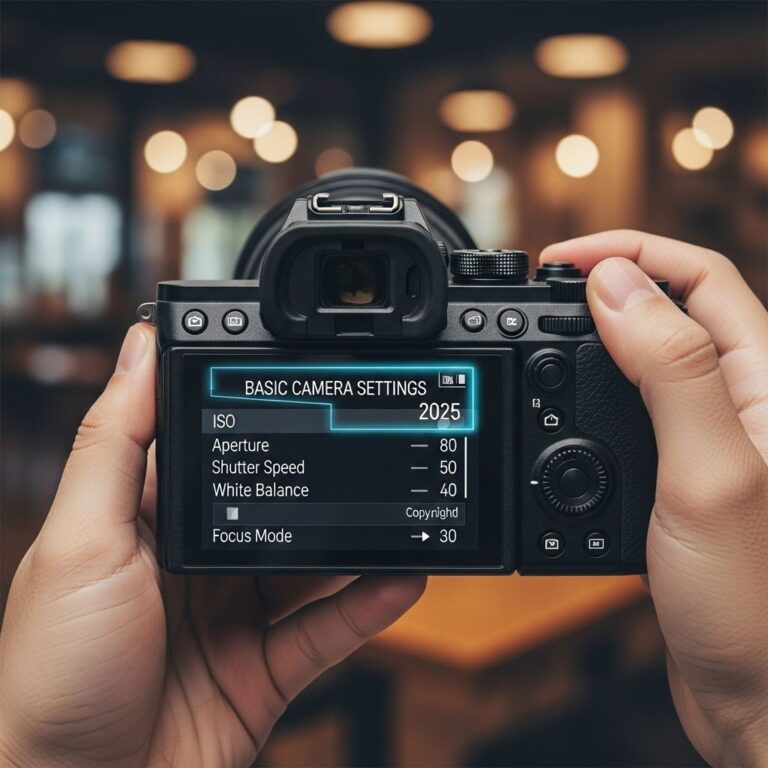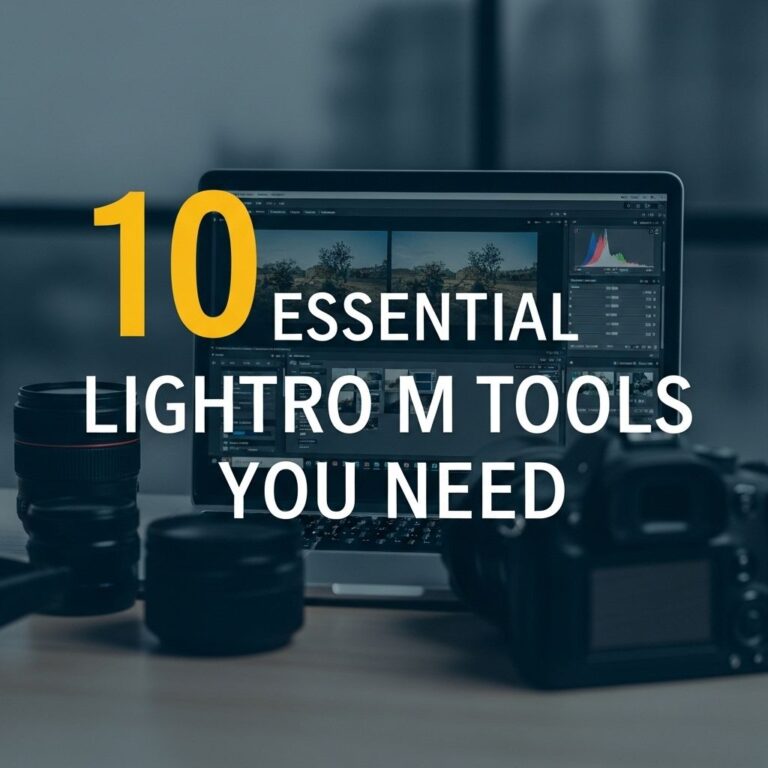Photography is an art that requires an understanding of various technical elements to capture stunning images. For beginners, navigating through the myriad of camera settings can be overwhelming. Mastering a few basic camera settings can significantly improve your photography skills and help you take control of your shots. Let’s dive into the essential camera settings that every beginner photographer should understand.
Table of Contents
Understanding the Exposure Triangle
The foundation of photography lies in the exposure triangle, which comprises three key elements: aperture, shutter speed, and ISO. Understanding how these elements interact will enhance your ability to take well-exposed images in varying conditions.
Aperture
Aperture refers to the size of the opening in the lens through which light passes. It is measured in f-stops (e.g., f/2.8, f/5.6, f/11). The aperture affects not just the exposure but also the depth of field.
- Wide Aperture (small f-stop number): Allows more light, creating a shallow depth of field (blurry background). Ideal for portraits.
- Narrow Aperture (large f-stop number): Allows less light, producing a greater depth of field (more in focus). Ideal for landscapes.
Shutter Speed
Shutter speed determines how long the camera’s shutter remains open to expose the sensor to light. It is measured in seconds (e.g., 1/60, 1/1000). Faster shutter speeds can freeze motion, while slower speeds can create motion blur.
- Fast Shutter Speed: Useful for capturing fast-moving subjects, like athletes.
- Slow Shutter Speed: Good for low-light situations or to create artistic motion blur.
ISO
ISO measures the sensitivity of your camera’s sensor to light. A lower ISO is used in bright conditions, while a higher ISO can be beneficial in low light.
- Low ISO (e.g., 100 or 200): Produces cleaner images with less noise; ideal for sunny conditions.
- High ISO (e.g., 1600 or higher): Can introduce noise; useful for night photography or dim environments.
Basic Camera Settings to Experiment With
Now that we have a grasp of the exposure triangle, let’s explore some basic camera settings that can enhance your photography experience.
1. Shooting Mode
Most cameras offer various shooting modes. As a beginner, understanding these modes is crucial:
- Auto Mode: The camera chooses all settings. Good for beginners but limits creative control.
- P Mode: Program mode allows you to control ISO while the camera selects aperture and shutter speed.
- Aperture Priority Mode (Av or A): You choose the aperture, and the camera adjusts shutter speed.
- Shutter Priority Mode (Tv or S): You set the shutter speed, and the camera adjusts the aperture.
- Manual Mode (M): Complete control over both aperture and shutter speed, ideal for learning and creativity.
2. White Balance
White balance (WB) adjusts the color temperature of your images based on lighting conditions. Common settings include:
| White Balance Setting | Best Used For |
|---|---|
| Daylight | Sunny conditions |
| Cloudy | Overcast days |
| Tungsten | Indoor lighting with bulbs |
| Fluorescent | Fluorescent lighting |
| Custom | Specific lighting scenarios |
3. Focusing Modes
Understanding your camera’s focusing modes can help you achieve sharp images:
- Single-Point AF: You select a single focus point; great for portraits and static subjects.
- Continuous AF: The camera continuously adjusts focus on moving subjects, ideal for sports photography.
- Auto AF: The camera decides the focus points automatically; convenient for beginners.
4. Exposure Compensation
Exposure compensation allows you to adjust the exposure level in semi-automatic modes. If your images are too bright or too dark, you can adjust the exposure by a certain number of stops.
- Positive Compensation (+): Brightens the image.
- Negative Compensation (-): Darkens the image.
5. Metering Modes
Metering modes determine how your camera measures light for exposure. The main types include:
- Matrix Metering: Evaluates the entire scene; good for general images.
- Center-Weighted Metering: Focuses on the center of the frame; useful for portraits.
- Spot Metering: Measures a specific area; ideal for backlit subjects.
Putting It All Together
Now that you understand the fundamental settings, here’s a quick recap of how you can apply them:
- Identify the lighting conditions and choose the appropriate ISO.
- Select the shooting mode that aligns with your experience level.
- Adjust the aperture and shutter speed while keeping the exposure triangle in mind.
- Set the white balance according to your environment.
- Choose focusing and metering modes based on your subject and composition.
Conclusion
Photography is a journey that continues to evolve as you learn and experiment with different techniques. Understanding and mastering these basic camera settings will empower you to take control of your photography and create stunning images. Take your time to practice, explore, and most importantly, enjoy the process of capturing the world around you.
FAQ
What are the essential camera settings for beginners?
The essential camera settings for beginners include aperture, shutter speed, ISO, white balance, and focus mode.
How does aperture affect my photos?
Aperture controls the amount of light entering the camera and affects the depth of field, allowing you to blur backgrounds or keep everything in focus.
What is shutter speed and why is it important?
Shutter speed determines how long your camera’s sensor is exposed to light, which can affect the sharpness of moving subjects and overall exposure.
How does ISO influence image quality?
ISO measures the camera sensor’s sensitivity to light; a higher ISO allows for better low-light performance but can introduce noise or grain in images.
What is white balance and how do I set it?
White balance adjusts the color temperature of your photos to ensure accurate color representation; you can set it based on the lighting conditions or use presets.
What focus mode should beginners use?
Beginners should start with auto-focus modes, such as single-shot or continuous focus, to help ensure sharp images without manual adjustments.









